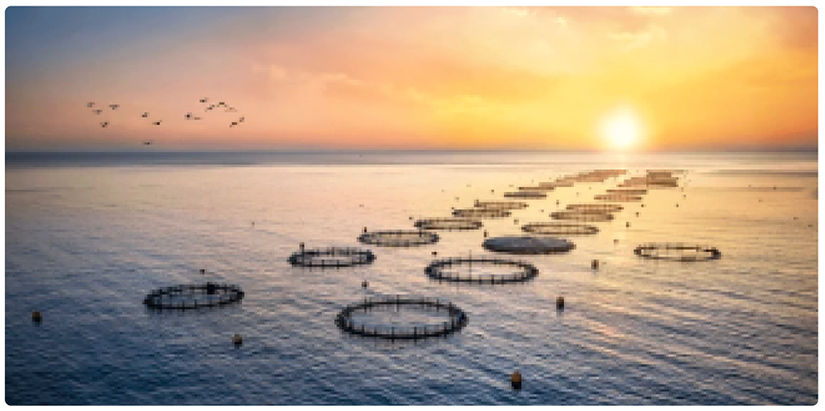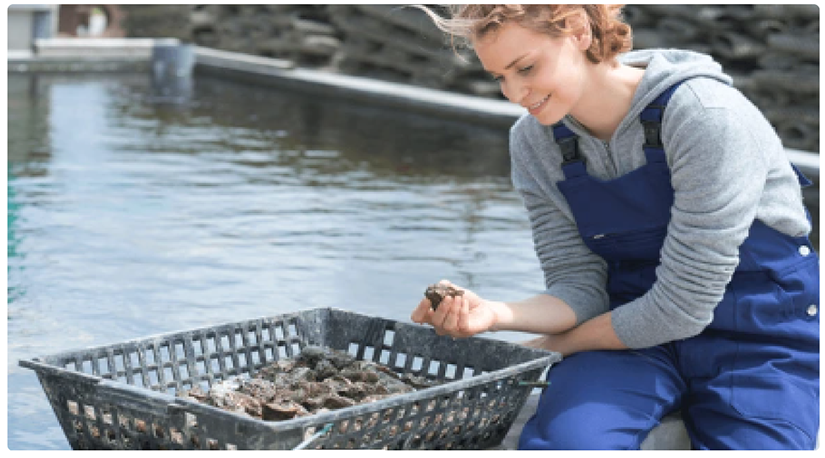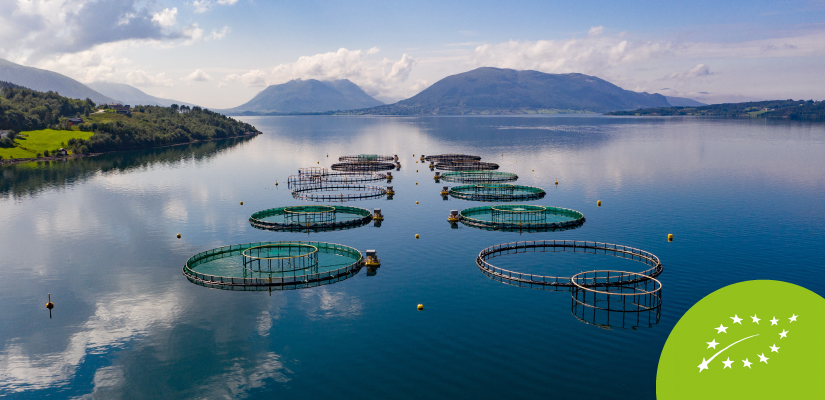
Fish farming
Fish farming is a type of aquaculture that deals with the growth of fish in controlled aquatic enclosures such as ponds, lakes, reservoirs, or net pens in the sea. These can be either completely closed systems, called “integrated recycling systems”; semi-closed systems, referred to as “flow-through/raceway systems”; or open systems, also known as “cage systems”. The most commonly farmed fish species in the EU are European seabass, gilthead seabream, Atlantic salmon, common carp and rainbow trout.

Farming of shellfish (molluscs and crustaceans) and other invertebrates
Shellfish farming is the cultivation and harvest of aquatic invertebrates, including both molluscs such as mussels, oysters and clams and crustaceans like shrimps. Various farming techniques exist for this type of aquaculture, depending on the species farmed as well as the geographic location of the farm. Shellfish can be grown directly on the beach, placed in protective netting or grow bags at the bottom of the water, or suspended above the sediment on longlines or from rafts. The main species produced in EU shellfish farming facilities are Mediterranean mussels, Blue mussels, Pacific cupped oysters, Venus clams nei, Sea mussels nei, Venus clams and Grooved carpet shells.
Other invertebrates farming refers, inter alia, to sea urchins or sea cucumbers.
More information is available on the Infographic developed by the AAM

Algaculture
Algaculture is a form of aquaculture focused on the farming of algae species, including macroalgae and microalgae and cyanobacteria such as spirulina. Macroalgae, commonly known as seaweed, are cultivated in coastal/offshore marine waters or in closed systems on land. Seaweeds are key organisms in the Integrated Multi-trophic Aquaculture systems. Microalgae/cyanobacteria are cultivated in photobioreactors, raceway ponds or fermenters.
The biochemical compounds and properties make algae a valuable ocean material for commercial applications such as human food, animal/fish feed and feed additives, medicine, pharmaceuticals, nutraceuticals, fertilisers, plant bio-stimulants, bio-packaging, cosmetics or biofuels. Cultivated amounts in Europe are marginal, where out of 85 000 tons of algae harvested in the EU, only around 1% originate from algaculture and the rest is harvested from wild stocks. The European Commission aims at unlocking the algae potential in Europe by, e.g. implementing the EU Algae initiative adopted on 15th November 2022 and setting up a European Algae Stakeholder Forum.
More information is available on the Infographic developed by the AAM.

Organic aquaculture
Organic aquaculture is a management system for farming fish and other aquatic species based on the organic principles set out in the EU Regulation on organic production and labelling of organic products (Regulation (EU) 2018/848). Organic principles include inter alia the responsible use of energy and natural resources, the restriction of the use of external inputs, a high level of animal welfare respecting species-specific needs and the continuing health of the aquatic environment and the quality of surrounding aquatic and terrestrial ecosystems.
A working document on the issues impacting the development of EU organic aquaculture (August 2023) is available here: website.
More information is available at the Commission’s website on
As well as on the Infographic developed by the AAM
The European Commission, the European Economic and Social Committee, the European Committee of the Regions, COPA-COGECA, and IFOAM Organics Europe organise, on an annual basis, the EU Organic Awards. These awards reward the best and most innovative organic sectors in the EU, that are contributing to reduce the impact from agriculture and aquaculture on the environment and climate. Further information on the different categories and awards and on how to apply are available on the EU Organic Awards page.
Applications can be submitted online from 11 February until 27 April 2025.
